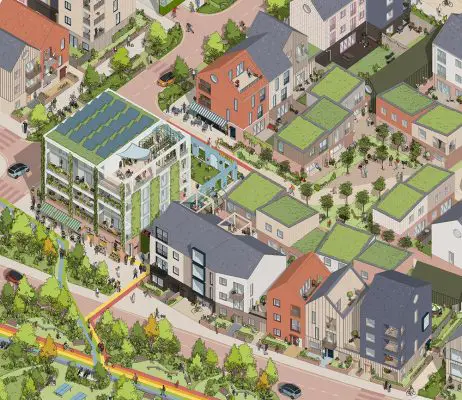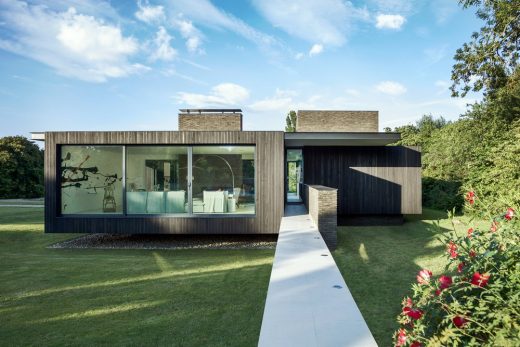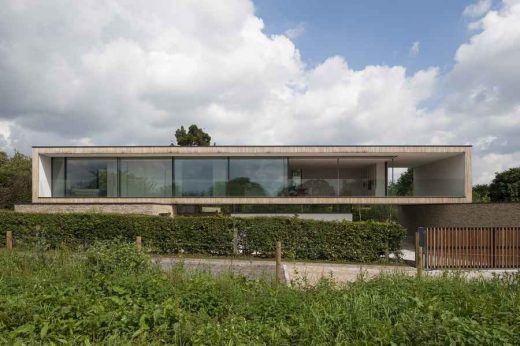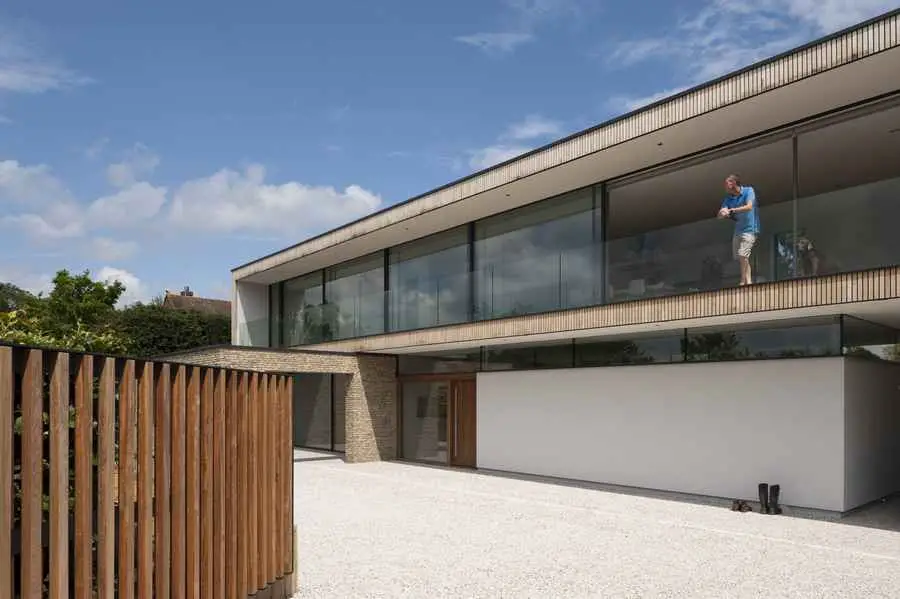Home of 2030 Design Council Competition, UK Housing, Residential Architecture News
Home of 2030 Design Council Guide News
4 Dec 2020
Home of 2030 Design Competition Winners,
Home of 2030 Design Competition

image © igloo
Home of 2030 Design Competition
+Home designed by igloo Regeneration with Useful Projects, Expedition Engineers and Mawson Kerr and Connector Housing designed by Openstudio with Hoare Lea, LDA Design and Gardiner & Theobald are the joint winners of the competition.
13 July 2020
Design Council Home of 2030 Guide
Design Council has today launched findings into how homes of the future should be designed.
The Public Vision for the Home report was commissioned to inform the government-backed Home of 2030 competition and sets out 20 principles that should shape all new housing, gathered through engaging with individuals across the country for a ground-up view.
Design Council puts forward that as well as being commissioned for the Home of 2030 competition it should be a tool for everyone involved in housing delivery because of the approach and content.
Sarah Weir OBE, Chief Executive of Design Council, said: “We need to shift the conversation about housing to one about the home, and to emphasise the voices of those who matter the most when it comes to the design of our future homes: the people who will live in them.”
What we need from our homes
Design Council launches housing guide for Home of 2030
(13 July 2020) The results of a wide-reaching public engagement exercise designed to understand and provide new insight into what people need from their homes has been launched today by Design Council.
- Part of the government-backed Home of 2030 competition being run by the BRE, Design Council, RIBA Competitions and the Ministry of Building Innovation + Education (MOBIE), A Public Vision for the Home of 2030 has been developed by Design Council to inform the second stage of the Home of 2030 competition as well as providing guidance for the housing sector as a whole.
- Setting out a vision and principles for successful homes of the future, the report focusses on 20 key principles based on the findings from local workshops and polling among a nationally representative sample of adults in England undertaken by Savanta ComRes.[i]
Housing Minister Rt Hon Christopher Pincher MP, said: “Today’s report follows one of the largest-ever exercises to place people at the heart of new homes – revealing precisely what we need from the homes of the future.
“I’m keen to see the Home of 2030 entries later this year and how they take these principles on board to deliver new low-carbon homes and independent living for older generations. Green, clean homes will help our economy to bounce back more sustainably than ever before.”
“Even before Covid-19 brought about new ways of living and working, this research started to highlight that we still need to get the fundamentals right. We all need more, different things from our homes as we move through our lives, and this needs to be recognised, accommodated and celebrated.
“As well as informing the next stage of the Home of 2030 competition, this report should be a tool for everyone involved in housing delivery. Good homes impact everything – from our health and wellbeing to the success of those bringing them forward and national efforts to tackle climate change. At a time when housing delivery is particularly complex it makes individuals’ priorities clear.”
Design Council’s 20 Principles for the Home of 2030
The 20 Principles of the Home of 2030 emerged from undertaking public workshops and were tested through polling. They are divided into six main themes which reflect participants’ key priorities and concerns.
Being fit for purpose
- A home that is affordable to run (e.g. rent, mortgage, utilities) so I can still live a comfortable life
- A home that gets the basics right (e.g. noise, light, ventilation, temperature)
- A home where I don’t have to worry about everything working as it should
Giving people agency
- A home that is easy to adapt or extend
- Having the opportunity to contribute to the design of my home
- A home that is simple to fix and maintain without assistance
- Having more choice and freedom over my housing options
- Having control over what digital technology can do in my home
Addressing the climate crisis
- A home that is environmentally friendly and is part of a response to climate change
- A home that makes it easier for me to make more sustainable living choices
Connecting people and their communities
- Having regular contact with my neighbours
- A home that has spaces and facilities that I can share with my neighbours
- A home that is in a neighbourhood that has all the amenities that a community of all different ages may need
- A home with plenty of convenient travel options so that I can get around easily
Meeting the needs of every life stage
- A home which is suitable for multiple generations of my family to live in
- A home that is my current home, with improvements
- A home where it is possible for me to work from home
- A home that has quality private or shared gardens
Representing something different
- A home that looks attractive and has its own identity
- A home that is innovative and different to what people have seen before
The responses of particular groups – for instance younger (aged 18-34) compared to older adults (55+), those with and without caring responsibilities, and those living in urban compared to rural areas – were also analysed and the findings set out separately in the report. Everyone surveyed was an adult living in England.
This new insight will inform the second stage of the Home of 2030 competition later this year – where shortlisted designers, developers, SMEs, contractors, funders and product suppliers will come together to develop their concepts in Phase 2 of the competition.
Elli Thomas, Lead Programme Manager at Design Council who sits on the Home of 2030 team, added:
“It quickly became clear that it is at home where people feel and celebrate their control, independence and agency; where they seek and find comfort and where they can live their lives and fulfil their values.
“During this engagement process we looked at the issues that people see as important in their future homes and explored how this differs across different regions, environments, and demographic groups. We highlighted the differences between what people have at the moment and what they want in the future, identifying particular life stages where certain factors are more important and exploring some of the emotional as well as functional requirements that people have from where they live.
Understandably, people want to live in their homes for as long as possible, which means accommodation must be able to adapt. We also need to look wider. As one workshop participant put it, a house is important, but the neighbourhood ‘is what makes it a home’. As another put it, we should ‘start with the village’.”
Home of 2030 Design Council Guide Principles
Developing the 20 Principles
This report is based on a public engagement process undertaken by Design Council with participants across England from November 2019 to January 2020.
Four regional workshops resulted in extensive insight, ideas, visions and values from participants both on their current homes and on what would be important to them in their future homes. These findings were then analysed and synthesised into a set of principles.
Following the workshops, a national poll among English adults was carried out in order to test the principles with a larger and nationally representative audience, in order to assess the validity of the statements; to explore which ones were more important to the public overall; and to explore key demographic and regional differences.
Savanta ComRes was commissioned to carry out the poll, and surveyed 2,039 English adults aged 18+ online between 29th-30th January 2020. The data were weighted to be representative of all English adults by key demographic categories including age, gender, region and social grade. Savanta ComRes is a member of the British Polling Council and abides by its rules. Full data tables are available on: www.comresglobal.com.
The poll tested 20 principles and asked an open question, to allow respondents to also note whether there are any other factors that they feel are important to them when they think about their expectations and visions of the ‘home of 2030’ that we missed. A series of “counterpart” questions to each of the principles were also asked to see whether there was a relationship between what people currently have in their homes and their vision for the future in order to build an understanding how each principle compared to people’s current experience of home.
About Home of 2030
Home of 2030 seeks to encourage the development of homes that will help tackle the key challenges facing our society. It focuses on solving multiple issues, to generate new typologies and products that are age friendly and inclusive, address health and wellbeing and at the same time harness new and evolving technologies for a low carbon and energy efficient future.
Home of 2030 is focused on deliverability, cost-effectiveness and design quality, addressing gaps that may exist in the market. It is a cross-departmental initiative funded by HM Government, with a steering group that includes the Ministry of Housing, Communities and Local Government (MHCLG), the Department of Business, Energy and Industrial Strategy (BEIS) and the Department of Health and Social Care (DHSC).
The programme is managed by a multi-talented consortium led by BRE, the leading international building science centre. RIBA Competitions are managing the design competition element of the initiative. Design Council are providing public and SME engagement, and educational charity MOBIE are responsible for outreach to young people.
About Design Council
Design Council’s mission is to make life better by design. We work with people to create better places, better products and better processes, all of which lead to better performance.
We commission pioneering evidence-based research, develop ground-breaking programmes, and deliver influencing and policy work to demonstrate the power of design and how it impacts three key areas of the economy: business innovation, places and public services. We bring together non-designers and designers – from grassroots to government – and share with them our design expertise to transform the way they work.
Previously on e-architect:
New UK Housing News
8 July 2020
Construction Industry Reaction To Summer Economic Update
UK Summer Statement Response
6 July 2020
Is ‘build build build’ best for England’s planning system?
Alister Scott, Professor of Environmental Geography and an expert in urban planning and infrastructure, writes for The Conversation on proposals to change the UK’s planning system.
18 Jun 2020
Timber Frame: Accommodating The Differential
With sales of timber homes and buildings heading towards £1bn in the next 12 months*, Andy Swift, sales and operations manager, UK & ROI for ISO-Chemie, considers sealant tapes for timber frame structures and accommodating differential movement:
3 Jun 2020
UK Architects welcome landmark ARCO Report
We post comments from Mark Rowe, principal at Penoyre & Prasad and Félicie Krikler, director at Assael Architecture in support of ARCO’s landmark report launched earlier today:
Too little, Too late? Housing for an ageing population
UK Housing Links
English Architecture:
English Architecture Designs – chronological list
Location: UK
Contemporary British Homes
Recent British Home Designs
Black House, Kent, Southeast England
Architect: AR Design Studio

image courtesy of architects
Black House in Kent
, Buckinghamshire, Southern England
Design: John Pardey Architects with Ström Architects

photo : Andy Matthews
Buckinghamshire Property
Comments / photos for the Home of 2030 Design Council guide page welcome





